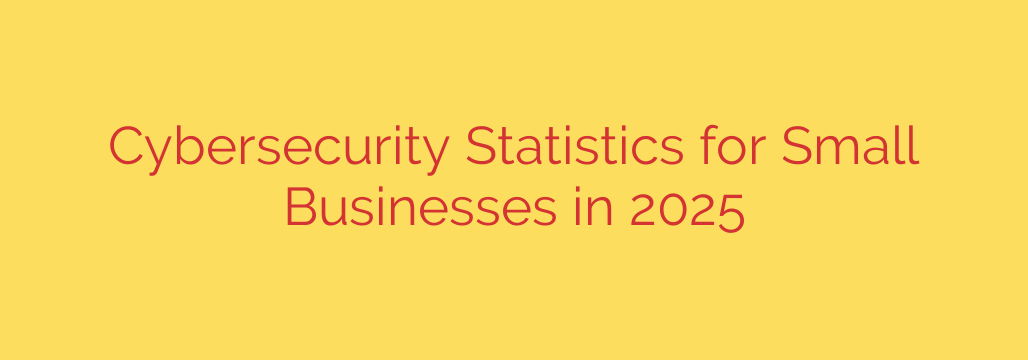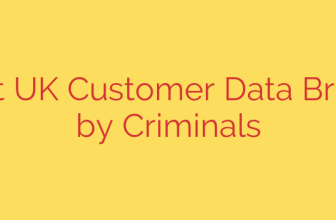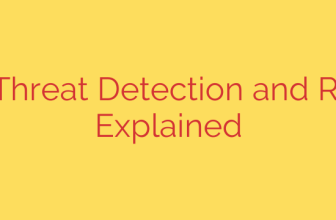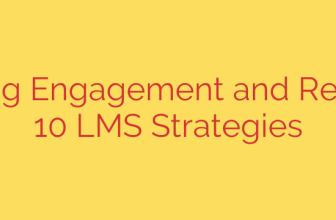
Is Your Small Business a Target? Alarming Cybersecurity Threats for 2025
If you think your small business is too insignificant to attract the attention of cybercriminals, it’s time for a reality check. The prevailing myth that hackers only target large, multinational corporations is dangerously outdated. In fact, the opposite is often true: small and medium-sized businesses (SMBs) are increasingly becoming the preferred targets for cyberattacks.
Why? Because criminals know that smaller companies often lack the robust security infrastructure and dedicated IT teams of their larger counterparts, making them easier, more profitable prey. As we look toward 2025, the landscape is becoming even more treacherous. Understanding the current threats is the first step toward building a resilient defense.
The Uncomfortable Truth: Why Hackers Focus on Small Businesses
Cybercriminals are opportunistic. They look for the path of least resistance, and frequently, that path leads directly to a small business’s network. The data you hold—customer information, financial records, employee details—is a valuable commodity on the dark web.
The statistics paint a grim picture. Over 40% of all cyberattacks are aimed squarely at small businesses, and the consequences can be devastating. A single successful breach isn’t just an inconvenience; it can be an extinction-level event for a growing company.
Top Cybersecurity Threats to Watch for in 2025
The methods used by hackers are constantly evolving, but several key threats continue to dominate the landscape. Staying ahead means knowing what to look for.
Sophisticated Phishing and Social Engineering
Phishing is no longer about poorly worded emails from foreign princes. Today’s attacks are highly sophisticated, using AI to craft convincing emails, text messages (smishing), and even voice calls (vishing) that impersonate trusted colleagues, vendors, or institutions. Human error remains the single biggest cause of successful data breaches, with a single employee click often being all a hacker needs to gain access.Ransomware’s Crippling Impact
Ransomware remains one of the most feared threats. In these attacks, criminals encrypt your critical files and demand a hefty payment for their release. The modern twist is “double extortion,” where they also steal your data before encrypting it and threaten to leak it publicly if you don’t pay. The average cost of a ransomware attack can easily cripple a small business, factoring in the ransom, downtime, and recovery expenses.Cloud Security Misconfigurations
As more businesses migrate to cloud services like Microsoft 365 and Google Workspace, new vulnerabilities emerge. While the cloud providers secure their infrastructure, your business is responsible for correctly configuring your own security settings. Simple misconfigurations, like weak permissions or exposed storage buckets, can leave sensitive data wide open for theft.Attacks on the Supply Chain
Hackers are increasingly targeting smaller vendors and software providers to gain a foothold into larger networks. If your business provides services to other companies, you are a part of a supply chain. A breach at your company could have a domino effect, impacting your clients and severely damaging your professional reputation.
Beyond the Ransom: The True Cost of a Cyberattack
The financial damage from a cyberattack extends far beyond any ransom paid or funds stolen. Business owners must prepare for a cascade of hidden costs, including:
- Business Interruption: Every hour your systems are down is an hour of lost revenue and productivity.
- Reputational Damage: Customers lose trust in businesses that cannot protect their data. Rebuilding that trust is a long and expensive process.
- Regulatory Fines: Depending on your industry and location, data privacy laws like GDPR or CCPA can impose steep fines for compliance failures.
- Recovery Costs: Hiring IT forensics experts, rebuilding systems, and investing in new security measures all add up.
The most frightening statistic of all? Nearly 60% of small businesses are forced to close their doors within six months of a significant cyberattack.
Actionable Steps to Protect Your Business Today
Protecting your business doesn’t require an enterprise-level budget. Proactive, strategic steps can dramatically reduce your risk profile.
Prioritize Employee Training: Your team is your first line of defense. Implement regular, mandatory cybersecurity awareness training. Teach them how to spot phishing emails, use strong passwords, and understand their role in protecting company data.
Enforce Multi-Factor Authentication (MFA): This is one of the single most effective security measures you can implement. MFA provides a critical layer of security that can block over 99% of account compromise attacks, even if a hacker manages to steal an employee’s password. Make it mandatory for all email, VPN, and critical application access.
Implement a Robust Backup Strategy: In the event of a ransomware attack, reliable backups are your lifeline. Follow the 3-2-1 rule: keep three copies of your data, on two different types of media, with at least one copy stored off-site or in a secure cloud environment. Test your backups regularly to ensure they can be restored.
Keep All Software and Systems Updated: Hackers exploit known vulnerabilities in outdated software. Enable automatic updates wherever possible and implement a patch management policy to ensure all operating systems, applications, and security tools are current.
Develop an Incident Response Plan: Don’t wait for an attack to figure out what to do. Create a clear, step-by-step plan that outlines who to call, how to isolate affected systems, and how to communicate with employees and customers.
Cybersecurity is no longer just an IT issue; it’s a fundamental aspect of business survival. By understanding the threats on the horizon and taking proactive steps to fortify your defenses, you can ensure your business doesn’t become another statistic.
Source: https://heimdalsecurity.com/blog/small-business-cybersecurity-statistics/








